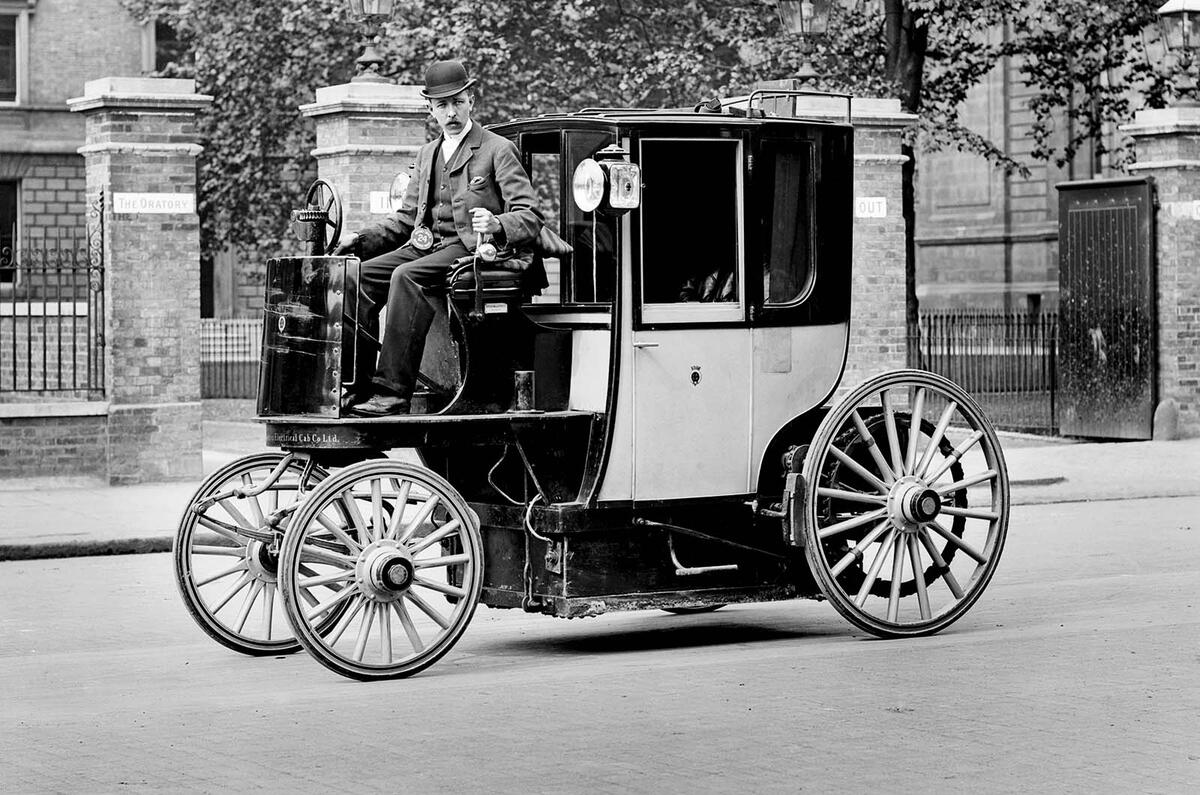The LEVC TX, road tested three issues ago, broke with more than a century of convention in being electrically driven, but it wasn’t the first cab to be so. In fact, London’s very first self-propelled taxi was.
For all of human history, every wheeled vehicle had harnessed animal power. But horses moved in unstable equilibrium; got tired; got spooked by noise and busy streets; got ill or injured; needed food, sleep and carers; and left unpleasant mess everywhere.
So of course people tried to create self-propelled vehicles from the very earliest days of electrical engineering. But it wasn’t until the 1890s that batteries and motors had matured enough – along with suspension, steering systems, tyres etc – to make EVs practical.
At the age of just 23, engineer Walter Bersey produced his first EV, a bus. Next came a van and then, just in time for the famous Emancipation Run of 1896, a cab – although it apparently required some assistance from a train…
In late August 1897, reporters crowded into a Lambeth factory for the inauguration of Bersey’s London Electrical Cab Company.
His cab featured a 40-cell, 170Ah battery and a 3hp motor at the rear axle. Its driver used a lever with a few forward and reverse positions, the foremost unleashing 10mph; a small steering ‘capstan’; and a braking foot pedal, which would automatically stop the motor.

The really clever thing, though, was how the battery was charged, which would be required every 50 miles – about a day’s work for a ‘jehu’. Energy was sent into the factory by a private supplier (there was no national grid yet) to charge batteries on trolleys. When filled, they were loaded onto a hydraulic lift and swapped for a flat battery that had been removed from the suspended tray under a cab’s body.











Join the debate
Add your comment